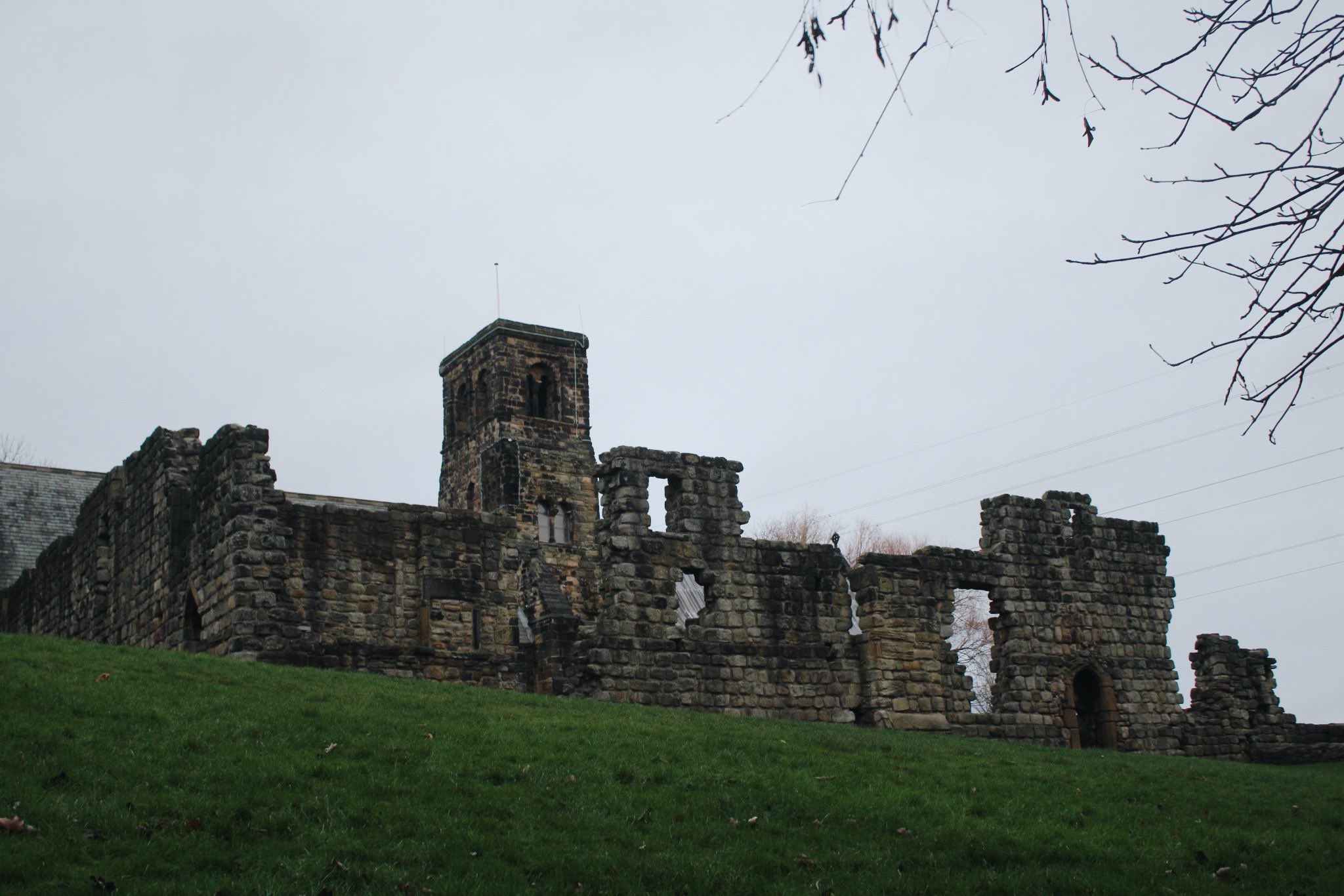
Jarrow
St Paul's Church & Monastery
Last Updated:
24 Dec 2024
Jarrow
This is a
Church, Monastery, Place of Worship
54.980341, -1.472345
Founded in
Current status is
Partly Preserved
Designer (if known):

Scheduled Monument (Ruins), Grade I listed (Church)
St Paul's Church
We arrive at Jarrow's St Paul's Church - one of the most special in the region and once the cultural epicentre of the North East alongside St Peter's.
This was part of the wider monastery which sits in ruins directly adjacent. Inside, you'll still find the 7th century foundation stone to Biscop - the main who founded the joint abbey. Biscop, after multiple trips to the continent, handpicked masons and artisans from across Francia and the Low Countries.
They returned to construct the continental-flavoured St Peter's at Monkwearmouth. Ecgfrith, the King of Northumbria, granted land to construct the church here under the same adjudication and design, which is why we continue to see the same pre-Romanesque flare. The tower is Norman mind but is very likely influenced by the saxon construction prior.
So what do we see today? The underbelly of the church is certainly 7th century, and the foundation stone inside testifies this. Part of the original north wall of the nave survives too. The eastern section is Saxon, which is the chancel today, and the tower is norman. Since then, there has been periodical restorations and rebuilds notably in 1782 and 1866 when George Gilbert Scott added a north aisle and porch. Scott is known across the country for his gothic masterpiece at St Pancras as well as some of the Whitehall buildings.
We also see some of the oldest stained glass in the world, crafted with the hands of the European artisans who came over for Biscop. Not in its original composition mind, but put back together in 1973 from fragments found inside.
The Monastery
Just like the church, these ruins are a patchwork of eras which were added onto each other until the suppression of the monasteries in the 16th century.
Though Bede resided here for most of his life, much of what we see does not date from when he took residence. Monastic life declined a little time after his death but was reestablished in the 11th century. It was Aldwin, the prior of Winchcombe, who devoted his life to the workings of Bede and restarted the monastery.
He reconstructed it in the style of the traditional Benedictine complexes with a central cloister, but only partly finished it before becoming the Prior of Durham. Thereafter, it was a poor and austere colony with only a few monks here. It wasn’t until the 13th or 14th century when most of the ruins we see came to fruition and self sustenance really began.
There was a farm here with a granary, mill and barn. A chapter house and kitchen stood on the east side which is part of what we see today.
Much of it was cleared as part of the wider dissolution in the 1530s, but parts were continually demolished through the centuries. It still marks one of the most remarkable religious sites in the whole of the north though, and I’m still yet to do the walk from Peter to Paul!
Listing Description (if available)


The two maps shown illustrate old Jarrow from the 1850s to the 1910s. It's very easy to visualise old Jarrow as a standalone settlement given its location on the riverbank and its boundary. The ruins and church have seldom changed since the first edition of the Ordnance Survey, though a well has since disappeared.
This used to be a little community in itself. In fact, given the location it's probable the oldest part of Jarrow. In more recent memory though there was a cluster of 18th century buildings here which were a mixture of cottages and an inn. By the 1890s, there was a hotel here as well as a small Sunday school and a boys school. We're going to go in a bit more detail with the latter.
The Bede Church School was opened here in around 1859. It was a national school, meaning the curriculum and teaching was provided by the Church of England to facilitate basic primary education for the poor. They cropped up in most industrial areas as a means to promote some level of literacy and numeracy skills as well as sow the seeds of faith from a young age.
From the outset the setting was cramped. It was a little rectangular building next to the monastery which did grow by the 1890s possibly with an extra room. Speculating here, but with the modernisation of education and the state later providing, I think this became the Sunday school.
There was also another school which appeared by the 1890s, which I think was St Bede's School opened in 1872 and shown in the last shot. It hosted 112 pupils and constantly suffered from shortages as kids were hungry, without shoes and adequate clothing. They were constantly giving out meals and shows to kids, as well as closing due to illness.
All these buildings were cleared by the middle of the 20th century, and now we're left with this mound probably featuring some remnants of these buildings.

The first striking comparison on this 1946 map compared with the elders is the density. The early 20th century saw Jarrow become increasingly dense with industry and housing. Rows of terraces encroached this side of the town by the 20s, though some industries had rationalised including the Straker Street Chemical Works.
The monastery and church continued to be a historic sight despite the growth and decline of Jarrow, even when it neighboured an old ballast railway and sand pit. The stocks managed to be preserved too.

The church & monastic ruins in December 2024

The church and monastery in 1910. Source: Newcastle Libraries

A well known print of old Jarrow from 1839 by Allom
